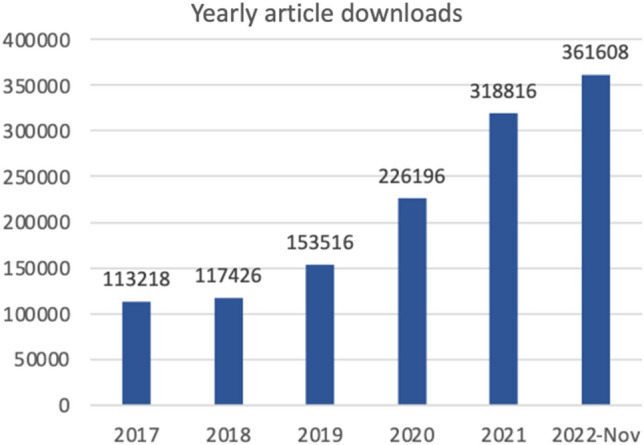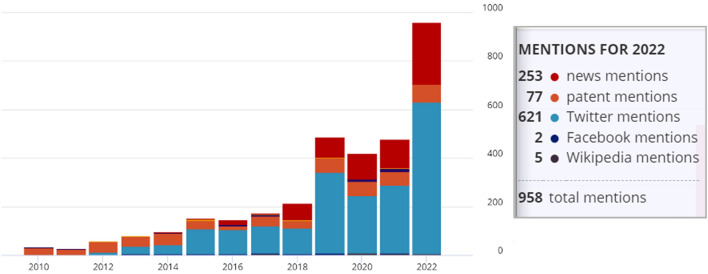“There was nowhere to go but everywhere, so just keep on rolling under the stars”.
Jack Kerouac, On the road
When, in January 2022, I was appointed as Associate Editor of the Journal of Clinical Monitoring and Computing (JCMC) I was not expecting that 1 year later I had to write this Editorial. Indeed, Professor Thomas Scheeren decided to follow a professional challenge not compatible with his position of Editor-in-Chief (EiC) and I was nominated to take his role. I have no words to express my feelings when I heard from him that I could be the next EiC of the Journal: my memory immediately jumped back to the late 90's when, while resident of Anesthesiology in Porto, Portugal, I started to be involved with peri-operative brain monitoring and intravenous anesthesia pharmacology and found the JCMC as my favorite journal (and I still remember my first contribution as reviewer 17 years ago...)!
Back to 1985, in the first issue of the Journal of Clinical Monitoring [1], Dr Smith, Dr Gravenstein and Dr Ream highlighted the role of monitors and computers in many fields related with patient care, centering the focus of the Journal on the patient’s benefit from gathering new information from anesthesiologists, critical care physicians, cardiologists, pulmonologists, technologists, nurses, computers and algorithms programmers, physicists and industry. 13 years after, this Journal merged with the International Journal of Clinical Monitoring and Computing [2] and a new era was opened joining two parent journals reinforcing the bridges between clinicians, engineers and technologists. This visionary mission has been accomplished by the recent Editors-in-Chiefs, lately by Professor Scheeren who brought to the Journal new Editors and new challenges [3]: we will do our best to continue to execute his plan to improve the open access and its transformative, hybrid nature with dissemination of published articles on social media and to promote diversity in authors, editors and reviewers.
Therefore, this is one more life event in the History of our Journal with new people and new ideas joining the Team. We have now the privilege to appoint Dr. Moritz Flick as Deputy Editor-in-Chief, Dr Chiara Robba as new Associate Editor for Neuromonitoring and Dr Michelle Introna as the inaugural Social Media and Communication Editor (our Twitter account @JcmcSoMe is open since September 2022 and is showing a growing interest in the number of tweets, re-tweets and replies) and other renowned names are in the pipeline to join the Board of Associate Editors during this year of 2023.
What to expect from the JCMC in 2023 and next years? In the new era of personalized, tailored Medicine, and still living the long-term effects of an unexpected Pandemic, JCMC is the ideal multidisciplinary Journal to publish on expanded multimodal bedside monitoring [4], remote surveillance [5], individualized medical care, physiological optimization and early detection of critical events. The JCMC should also have a pivotal role in opening the mind of clinicians to new technologies, new devices and medical informatics, contradicting the general opinion that “doctors hate computers” [6].
The Future is challenging but may be brilliant. The number of articles submissions has been increasing again after the decrease in 2021 probably related with COVID-19 pandemic; the number of yearly article downloads and open access articles and mentions in social media are equally increasing (Figs. 1 and 2). Sadly, the Impact Factor and alternative metrics haven’t been so shining and we are committed to achieve a better ranking, trying to include the JCMC in the top 20 journals in the category of Anesthesiology.
Fig. 1.

Number of yearly articles downloads until the end of November 2022
Fig. 2.
Number of mentions of JCMC in social media in 2022
To keep the Journal on the radar and to increase its impact, new features and initiatives, to mention a few, are in the horizon:
Adding invited special articles or commentaries, a point of view corner, images in monitoring and we will be very happy to receive suggestions from our readers to innovate the pages of the Journal;
Inviting Guest editors—individuals or scientific societies—and launching special issues with cutting edge topics;
Improving time frame from submission until final decision, turning the Journal more attractive to potential authors;
Participating in scientific meetings with a specific Journal session.
As Thomas (Scheeren) wrote in his inaugural Editorial [3], the success of the Journal “cannot be achieved without the continuous support of you, the readers, authors, reviewers, editorial board members, Associate Editors and members of the production team ...!”. With the example of my mentors (Jim Cottrell, Gavin Kenny and Pedro Amorim) and the permanent challenge of my former and current mentees (Andreia M Costa, Alexandra Saraiva and Zahra Moyiaeri) always in my mind, those will be always the shining stars guiding my new and unexpected on the road while EiC of the JCMC. Long life to the Journal!
Footnotes
Publisher’s Note
Springer Nature remains neutral with regard to jurisdictional claims in published maps and institutional affiliations.
References
- 1.Smith NT, Gravenstein JS, Ream AK. Why a journal on clinical monitoring. J Clin Monit. 1985;1:1–2. doi: 10.1007/BF02832681. [DOI] [PubMed] [Google Scholar]
- 2.Feldman J, Gravenstein J, Kalli I. Editorial. J Clin Monit Comput. 1998;14:1. doi: 10.1023/A:1007469329600. [DOI] [Google Scholar]
- 3.Scheeren TWL. To a new chapter. J Clin Monit Comput. 2021;35(1):1–2. doi: 10.1007/s10877-021-00658-4. [DOI] [PubMed] [Google Scholar]
- 4.Lobo FA, Shander A. Modern anesthetic noninvasive monitoring: a deep look into perioperative care. J Cardiothorac Vasc Anesth. 2019;33(Suppl 1):1–2. doi: 10.1053/j.jcva.2019.03.037. [DOI] [PubMed] [Google Scholar]
- 5.Safavi KC, Driscoll W, Wierner- Kronish JP. Remote surveillance technologies: realizing the aim of right patient, right data, right time. Anesth Analg. 2019;129(3):726–34. doi: 10.1213/ANE.0000000000003948. [DOI] [PMC free article] [PubMed] [Google Scholar]
- 6.Gawande A. Why doctors hate their computers. Accessed 15th December 2022: https://www.newyorker.com/magazine/2018/11/12/why-doctors-hate-their-computers.



